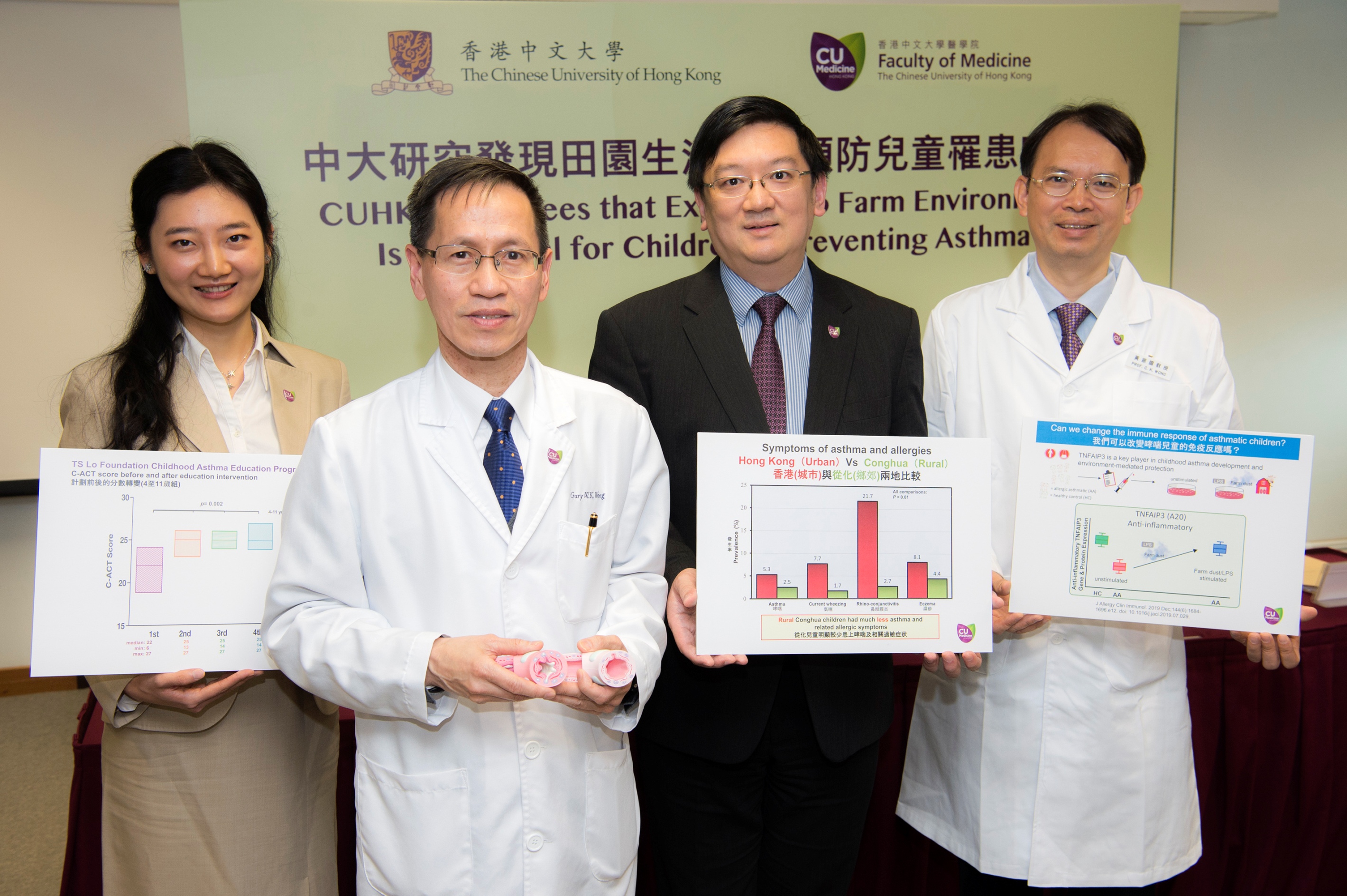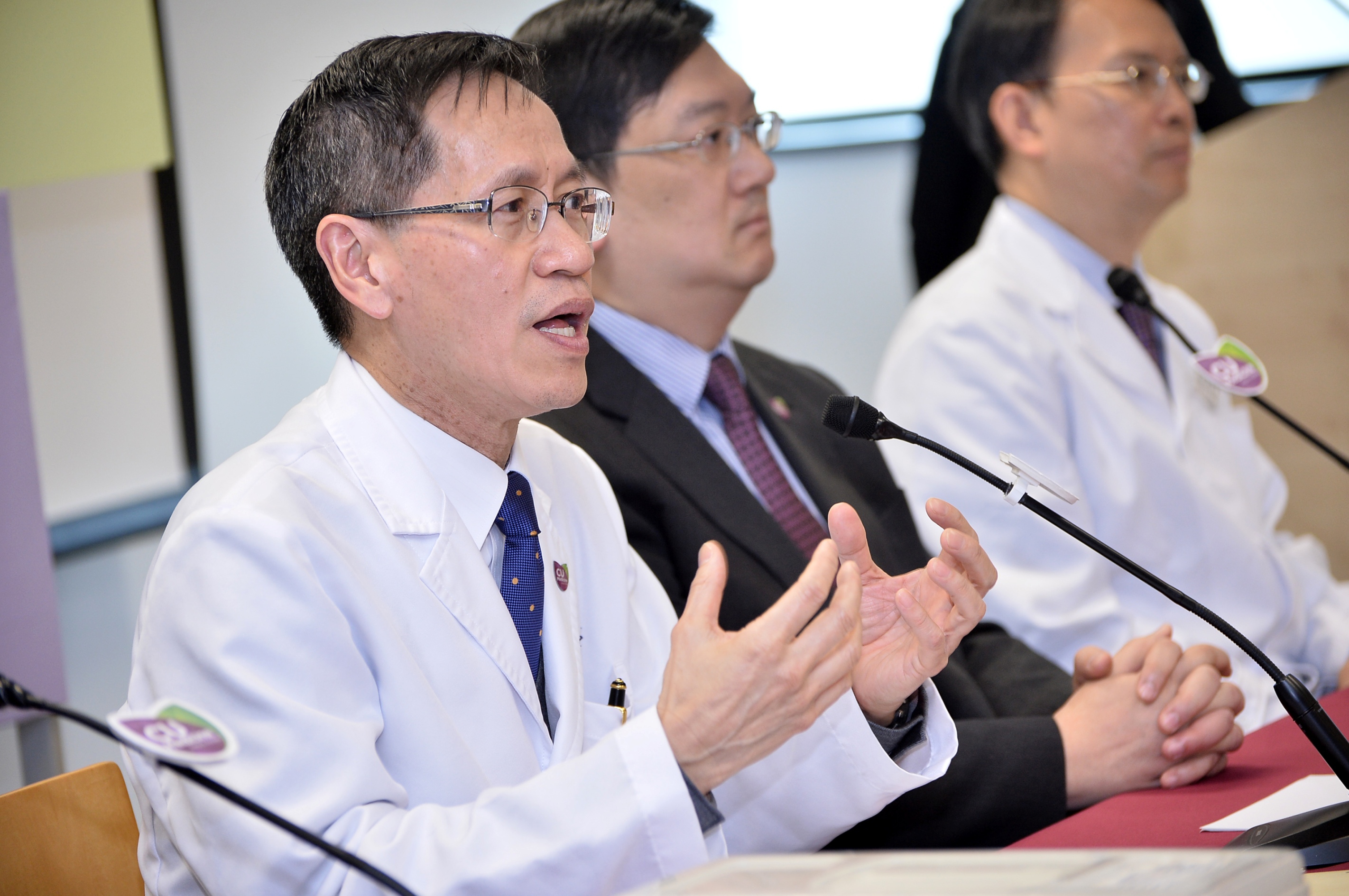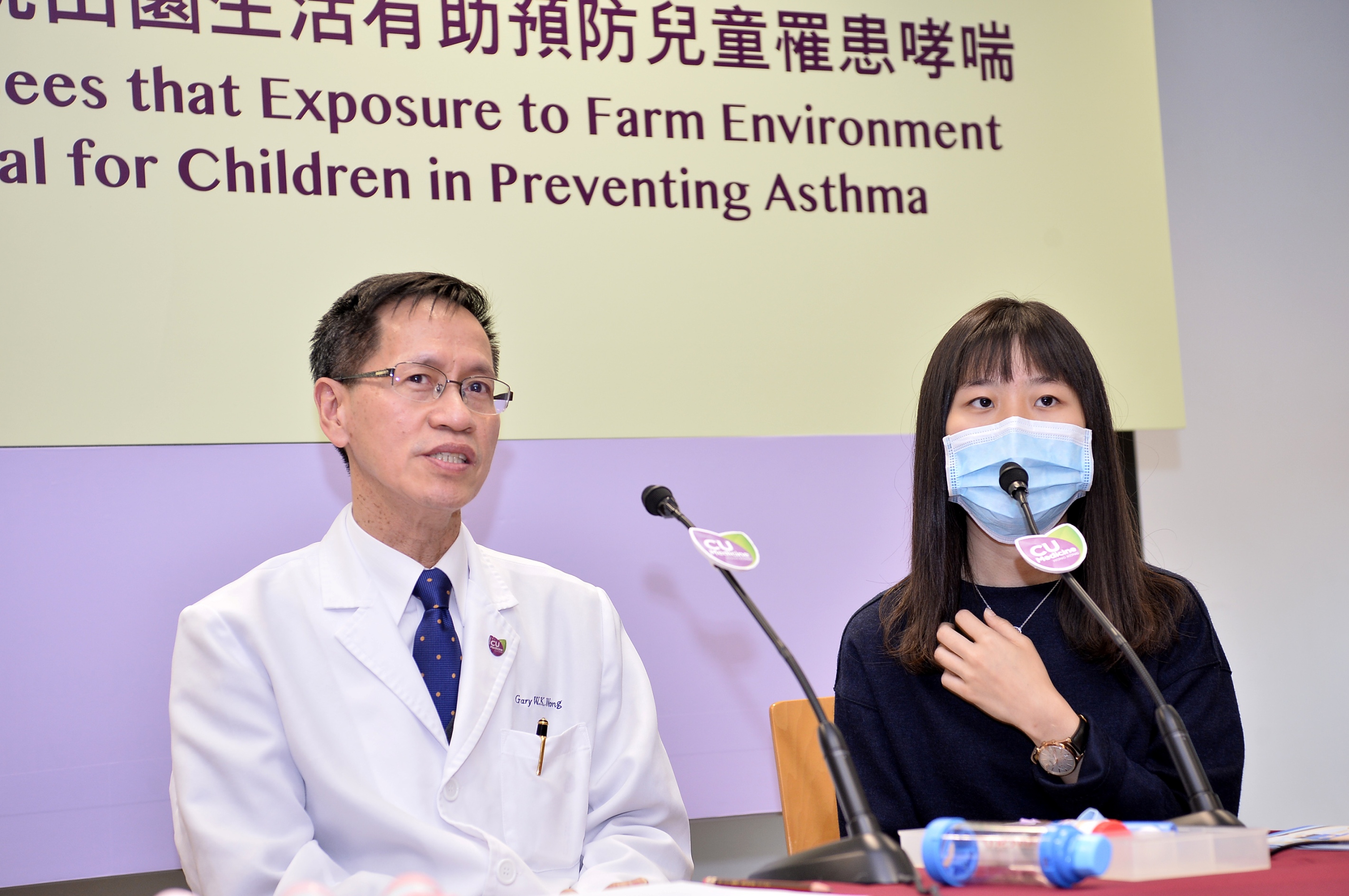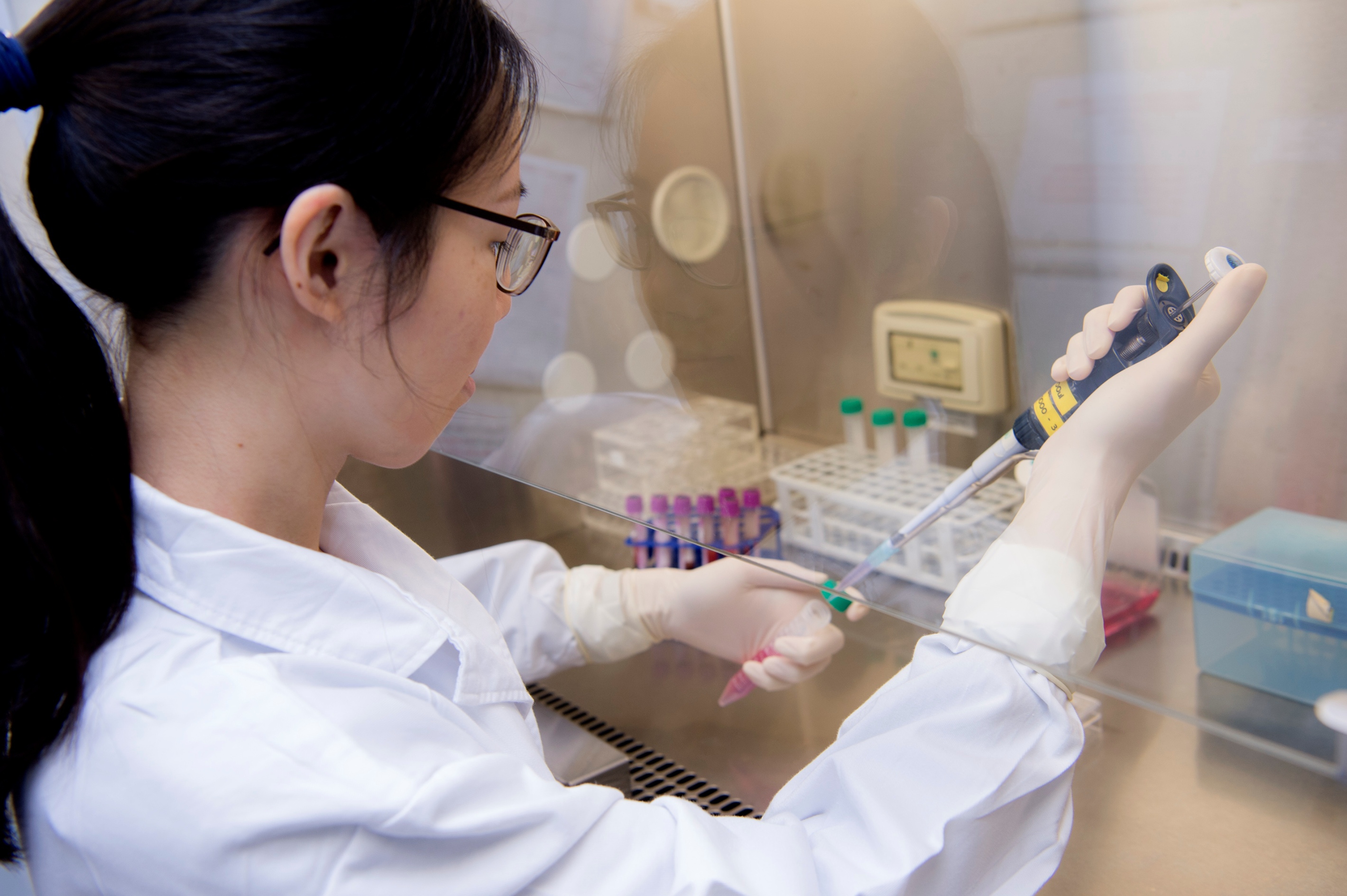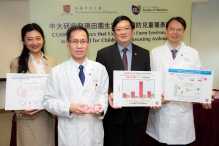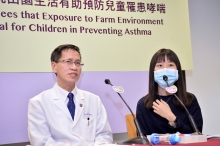CUHK
News Centre
CUHK Study Sees the Exposure to Farm Environment Is Beneficial for Children to Prevent Asthma
The Department of Paediatrics and the Department of Chemical Pathology of the Faculty of Medicine at The Chinese University of Hong Kong (CUHK) have collaborated with researchers from Germany, Finland and mainland China in a study that looks into the effect of exposing children to a farm environment to prevent allergic asthma.
The research team analysed the blood samples of over 2,000 healthy and asthmatic children from Europe and China. A protein was found to be a key factor in childhood asthma development and environment-mediated protection. The level of this anti-inflammatory protein in asthmatic children from urban areas was 50% lower than the healthy subjects. The study confirmed that farm dust exposure conferred an anti-inflammatory effect and might represent a promising future agent for asthma prevention and treatment. The findings have been published in the Journal of Allergy and Clinical Immunology.
Asthma is one of the most prevalent chronic diseases in childhood
The majority of child asthma cases are allergic asthma. The children’s bodies produce IgE antibodies against environmental antigens. The multifactorial cause of asthma includes genetic factors and environmental exposures illustrated by remarkable differences in prevalence between children from urban and rural areas.
Asthma prevalence has been increasing, particularly in westernised communities with high hygiene standards. In Hong Kong, there are 6,000 to 8,000 admissions for asthma to public hospital and 100 death cases per year.
Professor LEUNG Ting Fan, Chairman of the Department of Paediatrics of the Faculty of Medicine at CUHK, stated, “As there is an increasing number of patients with asthma and allergies, it is crucial to find out the solutions to improving the control of existing asthma patients and also the causes of the asthma in order to prevent the disease from occurring.”
Aims to disentangle the role of a protein during childhood asthma development and environmentally mediated protection
From 2013 to 2016, the researchers analysed the blood samples from 2,168 European (e.g. Germany, Switzerland and Finland) and Chinese (Conghua and Hong Kong) children. The aim was to disentangle the role of an anti-inflammatory protein called TNFAIP3 during childhood asthma development and environmentally mediated protection. TNFAIP3 expression was studied in asthmatic urban children and results indicated that their TNFAIP3 expression was about 50% of the healthy children across different urban areas.
Professor WONG Chun Kwok, Professor from the Department of Chemical Pathology of the Faculty of Medicine at CUHK, explained, “We demonstrated that asthmatic children from both Germany and Hong Kong expressed less TNFAIP3, a central negative regulator of the proinflammatory genetic pathway, which resulted in an uncontrollable inflammatory status. Notably, we also confirmed that the low TNFAIP3 expression levels were presented at birth in children who had asthma by the age of 10, suggesting TNFAIP3 as a potential biomarker for asthma prediction.”
Moreover, the research team stimulated the cells of urban asthmatic children with dust extracted from German and Finnish farms. Results showed that TNFAIP3 expression can be restored to the level of healthy subjects while decreasing the proinflammatory gene expression.
Professor Gary WONG Wing Kin, Professor from the Department of Paediatrics of the Faculty of Medicine at CUHK, concluded, “The anti-inflammatory capacities shown after the dust stimulation might indicate a potential therapeutic role for farm dust exposure. As beneficial effects of farm dust stimulation were demonstrated, we believe that exposure to farm environments is beneficial for children and potentially for allergy prevention and is even able to decrease the increased inflammatory status of patients with allergic asthma. This may represent a promising future agent for asthma prevention and treatment.”
Proper diagnosis and education are important to the management of asthma
Proper diagnosis and education are also important to the management of asthma too. Professor Gary WONG and his team conducted the “TS Lo Foundation Personalised Childhood Asthma Education Programme” from 2016 to 2019, which has provided assessment and education sessions to 2,600 children. It includes teaching them the proper use of asthma medications and assessing their asthma status. After the programme, the score in terms of the frequency and seriousness of asthmatic symptoms had been improved from 22 to 25 in the group of 4 to 11 year olds and from 21 to 25 in the group of 12 year olds or above. The higher the score, the better the control of asthma.
Professor Gary WONG added, “We would like to express our sincere gratitude to the TS Lo Foundation for their support of this Programme. We are delighted to see the Programme received a positive response and look forward to seeing the Programme help reduce the burden of asthma management on the public health sector.”
A study of the Faculty of Medicine at CUHK confirmed that farm dust exposure conferred an anti-inflammatory effect and might represent a promising future agent for asthma prevention and treatment. (From left) Ms. Hannah XING, PhD student; Professor Gary WONG and Professor LEUNG Ting Fan, Chairman of the Department of Paediatrics; and Professor WONG Chun Kwok from the Department of Chemical Pathology of the Faculty of Medicine at CUHK.
Professor Gary WONG states that their Paediatrics team has started the “TS Lo Foundation Personalised Childhood Asthma Education Programme” in recent years, providing assessment and education sessions to 2,600 children. Programme showed the participants have much improvement in their asthma control.
Summey (right) was admitted to the intensive care unit for asthma when she was 3 years old. She then followed the doctor's instructions to start swimming and now she has a good control of asthma.


